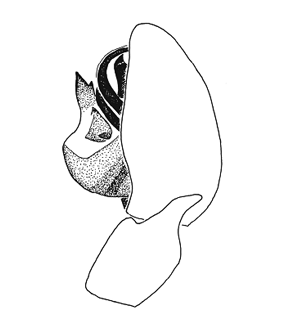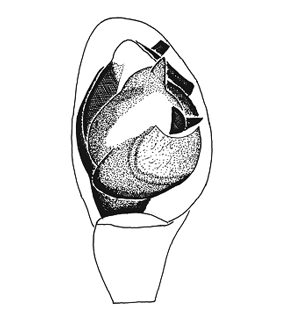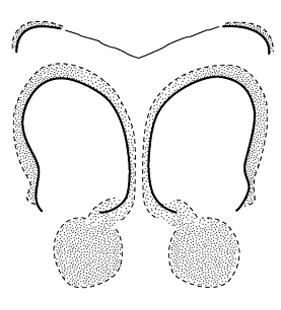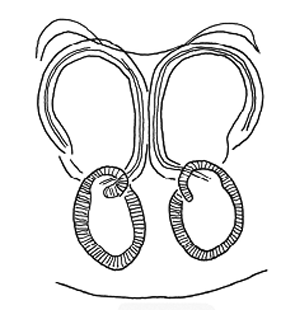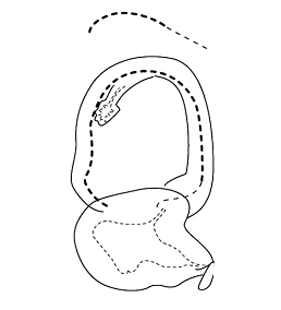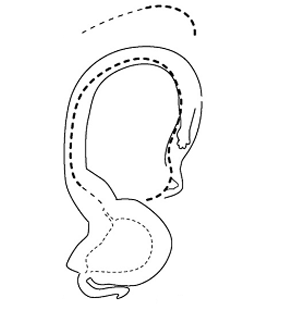Drassyllus villicoides (Giltay, 1932)
Beschreibung
Männchen
Retrolateraler Rand der Tegularapophyse vorspringend. Spitze des Embolusfortsatzes abgestumpft. Prosoma dunkelbraun. Beine dunkelbraun, Tarsen und Metatarsen gelb-braun. Opisthosoma schwarz, Scutum bedeckt 1/3 der Opisthosomalänge.
Körperlänge Männchen: 5.0 mmWeibchen
Epigyne mit ovalen "Fenstern". Färbung wie Männchen.
Körperlänge Weibchen: 5.66 mmVerbreitung
Phänologie
| Jan | Feb | Mar | Apr | May | Jun | Jul | Aug | Sep | Oct | Nov | Dec |
 |  |
Abbildungen
Verbreitungsnachweise
"No reference" bedeutet nicht, dass die Art in diesem Land nicht vorkommt, sondern dass wir die Referenz hierfür noch nicht eingefügt haben. Wir arbeiten daran.
Literatur
Bosmans R (2013) On the Gnaphosid and Lycosid spiders described by L. Giltay from the Balkans (Araneae: Gnaphosidae: Lycosidae). Bulletin de la Société Royale Belge d'Entomologie 149: 179-184 ![]()
Coşar İ, Danışman T (2023b) A new record of Drassyllus Chamberlin, 1922 (Araneae: Gnaphosidae) from Türkiye. Munis Entomology and Zoology 18: 1828-1831 ![]()
Lecigne S (2023) New contribution to the spider fauna (Arachnida: Araneae) of Kerkyra (Corfu) and update of the provisional checklist of species from the Ionian Island. Journal of the Belgian Arachnological Society 38 (1, suppl.): 1-51 ![]()
Senglet A (2012) Civizelotes new genus, and other new or little known Zelotinae (Araneae, Gnaphosidae). Revue Suisse de Zoologie 119: 501-528 ![]()
WSC (2025) World Spider Catalog. Version 26. Natural History Museum Bern, online at http://wsc.nmbe.ch (28.2.2025) doi: 10.24436/2 ![]()
